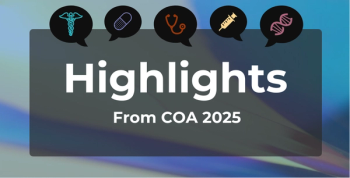
Progress of Health Policy, Data Advancements Shows Both Improvement and Struggle
The evolution of data in healthcare in combination with policy advancements demonstrates how far the field has come but also brings up new challenges.
At the kickoff to the 2-day combined AcademyHealth National Health Policy Conference and Health Datapalooza meeting Monday, Melinda Buntin, PhD, professor and Mike Curb Chair of the Department of Health Policy at Vanderbilt University, challenged the audience of so-called data nerds and policy wonks to come up with new solutions that are bipartisan, or even, she said, referring to her old life as a government health economist, nonpartisan.
Data and policy are integral to each other, both she and Niall Brennan, president and chief executive officer of the Health Care Cost Institute, said as they recapped the progress and challenges in both areas over the past decade or 2.
Compared with 2010, 2020 looks robust, Brennan said in their joint data and policy plenary.
Ten years ago, consumers could not download their own machine-readable claims data and send them to apps, while researchers had no easy public access to Medicaid or Medicaid Advantage data sets.
In 2020, electronic health records are a reality, as is Blue Button 2.0, the HHS and CMS effort to make health information interoperable with an open application program interface for a tech-savvy generation.
However, Brennan pointed out, there is “still no comprehensive way of measuring successes or failures in the healthcare system.”
Different payers hold onto claims data in their own silos, he said, which prevents the public from knowing more about the variation in costs for different procedures or even how many procedures a specialist has performed before a patient makes an appointment.
And legislation to enact a nationwide all-claims database didn’t get through the Senate last year, Brennan said, leaving employers and employees in the dark about what really drives healthcare costs.
Moreover, since EHRs are largely a creation of Washington, DC, culture, he joked that they include many of the same features: “southern efficiency and northern charm.”
More unforgiving, in his view, is that the nation’s largest EHR vendor
The rules are expected to be released shortly and seek to
However, with many new players in the HIT market, Brennan said, “we need a frank conversation about privacy” and more discussion about privacy as a “civil right.”
Before asking the audience to think about new solutions, Buntin recapped health policy achievements before getting into continued challenges.
“We have a political consensus that we need to expand access to care,” she said, including the need to move to value-based care and a recognition that patients with preexisting conditions need protection from being denied health insurance, which was enshrined in the Affordable Care Act (ACA). That, and the provision that young adults can stay on their parents insurance until age 26, are 2 of the most popular features of the ACA.
The ACA also gave rise to the Center for Medicare and Medicaid Innovation (CMMI), which gave CMS the ability to approve pilots without Congressional approval, and allowed states to expand Medicaid coverage.
In addition, she said, “We’ve also come an enormous way to appreciating the role that social determinants of health and social risk factors play. This represents a sea change from thinking that patients were to blame for noncompliance or readmissions to understanding that pursuing the objective of health required seeing patients as part of collective social systems.”
Even though recent results from the Camden Coalition show the difficulty of this task, Buntin said she does not think that such efforts are doomed.
Newsletter
Stay ahead of policy, cost, and value—subscribe to AJMC for expert insights at the intersection of clinical care and health economics.








